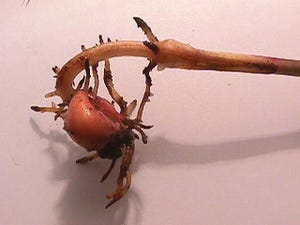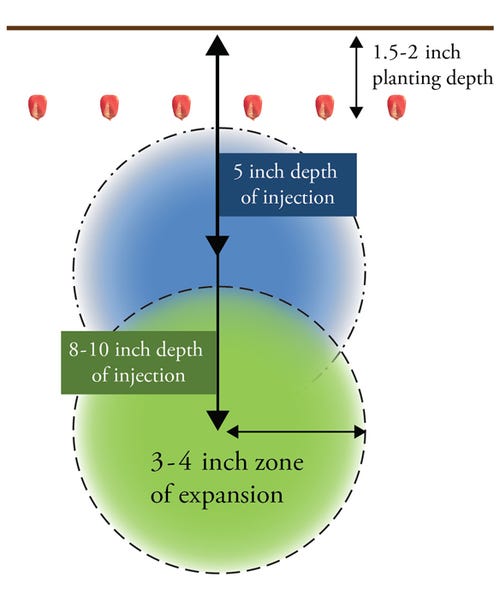
Separate corn seed and anhydrous ammonia with time and/or distance. That’s what a Pioneer agronomist says about increasing your odds of avoiding seed or seedling injury if you apply anhydrous ammonia as your nitrogen source in the spring before planting.
 CLASSIC SYMPTOMS: Here is a close-up of a corn seedling injured by accessing the zone where anhydrous ammonia was injected.
CLASSIC SYMPTOMS: Here is a close-up of a corn seedling injured by accessing the zone where anhydrous ammonia was injected.

Daniel Emmert, a Pioneer field agronomist, notes that there is no magic number of days to delay planting after application. The rule of thumb is five to seven days or longer, but it’s not a guarantee. It’s the same advice Bob Nielsen, the Purdue University Extension corn specialist, offers when asked the same question. Nielsen makes it clear that it’s very difficult to predict when and if anhydrous ammonia injury might occur.
However, both Emmert and Nielsen agree that there are ways to minimize potential injury. One tip is to apply anhydrous ammonia at an angle to the direction corn rows will run. Emmert notes that if you must apply it parallel to the rows, line up so that anhydrous is injected at least 5 inches to the side of the future row to minimize injury potential.
Inject at deeper depths
Another way to minimize injury potential is to inject anhydrous ammonia 8 to 10-inches deep, if possible. Researchers at the University of Illinois did a study many years ago and determined that anhydrous ammonia injected 4 inches deep caused severe injury. However, anhydrous ammonia injected 7 to 10 inches deep caused little injury, even when corn was planted the same day. In the Illinois study, injecting anhydrous ammonia 10 inches deep reduced injury even more than applying anhydrous ammonia at a shallower depth and waiting 10 days to plant.
The graphic illustrates why injecting ammonia deeper reduces chances of injury. A 3- to 4-inch expansion zone develops around where anhydrous is applied. That’s a zone roughly 7 inches in diameter. When anhydrous is applied deeper, seeds and young seedling roots are far more likely to stay out of the anhydrous ammonia retention zone.

WHY INJECTION DEPTH MATTERS: This graphic illustrates why how deep you inject anhydrous ammonia matters. The deeper it’s placed, the lower the odds that seeds or seedlings will be impacted.

Information supplied by Pioneer was used in this story.
About the Author(s)
You May Also Like




